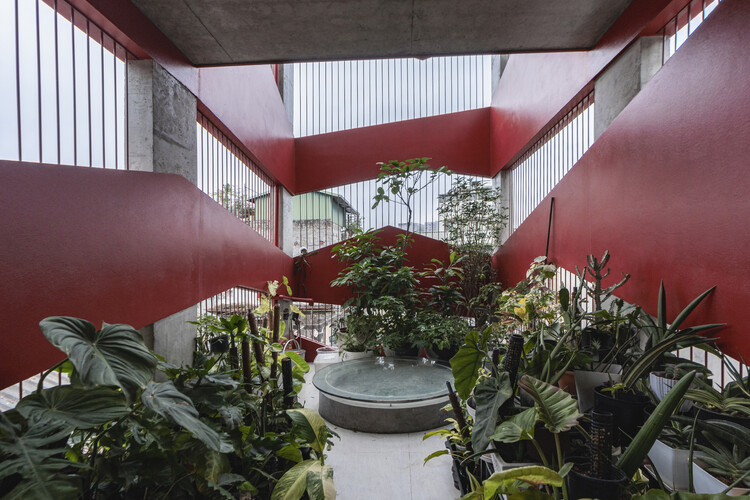





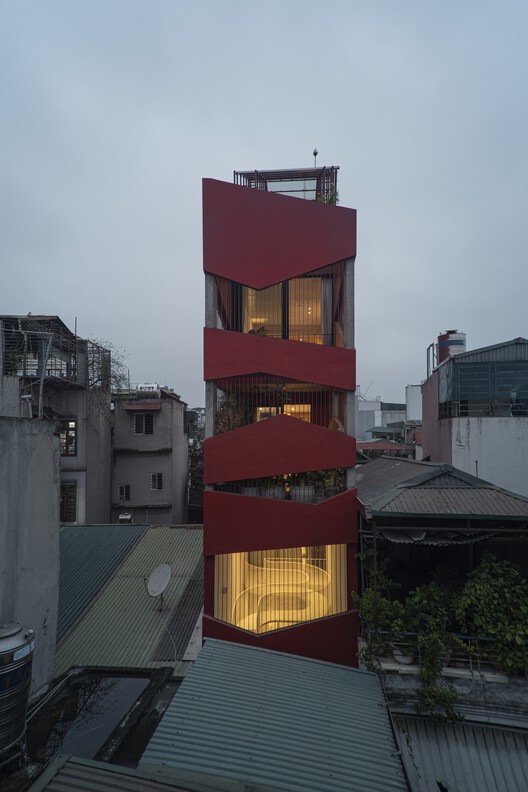
Text description provided by the architects. Maison KN is an individual house – it stands as a separate residence located within the historic core of Hanoi, amidst an area characterized by dense urban construction, boasting one of the highest building densities in the city. This country bears the scars of some of the most intense bombing by the US military during the Vietnam War. As a result, the area underwent rapid post-war reconstruction with minimal urban planning intervention, resulting in tightly packed alleys and narrow passageways, often lacking light and adequate natural ventilation.
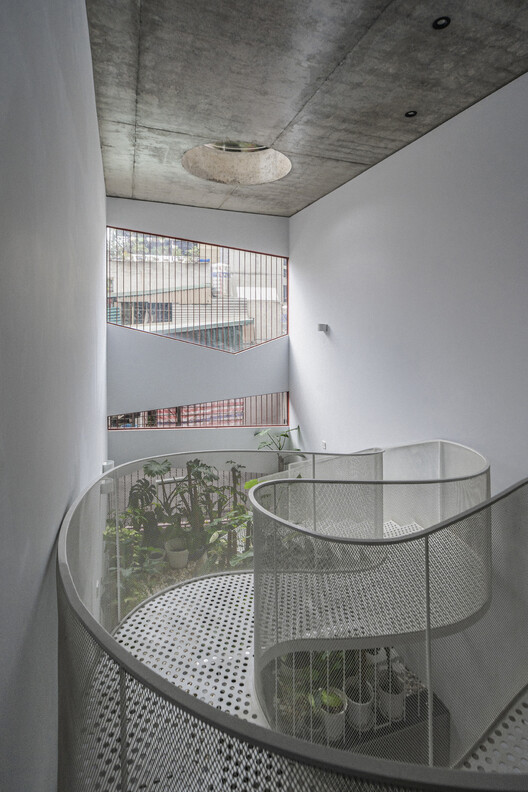
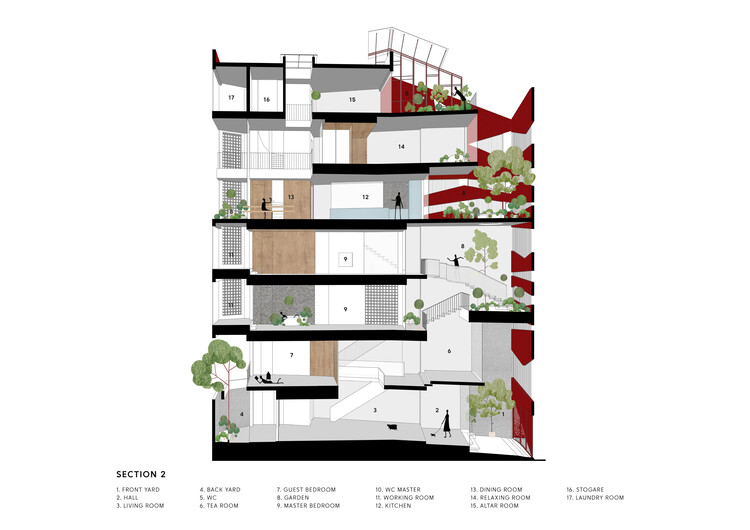
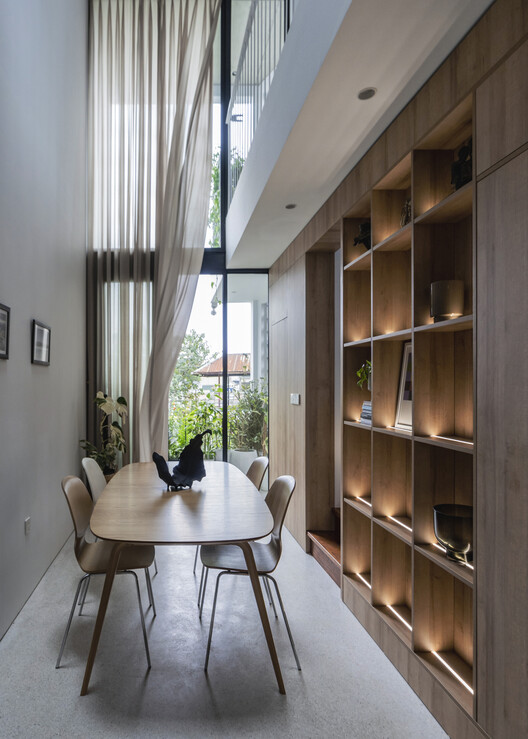
Commissioned for the two grown children of an old Hanoi family, Maison KN emerged from the need to adapt to a living space that softened the limitations of their previous neighborhood. In addition, the demands of remote work required a centrally located but semi-autonomous living arrangement, close to family ties but not entirely cohabiting, providing a degree of privacy. Thus, the house was conceived as a sustainable dwelling for the future for two possible small families with siblings.
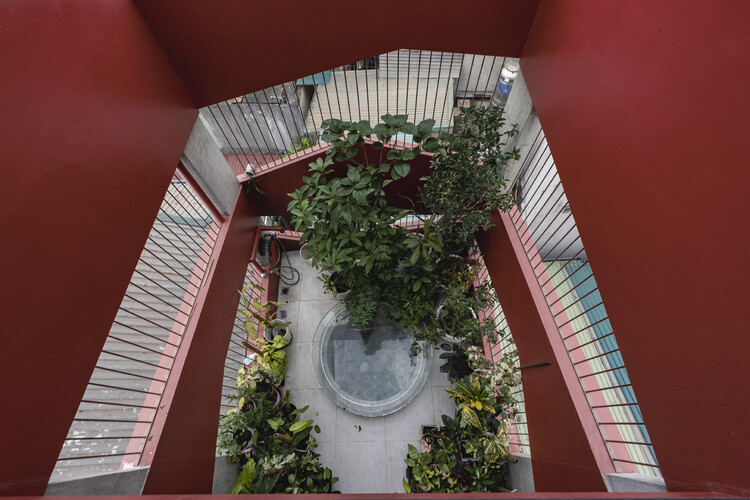
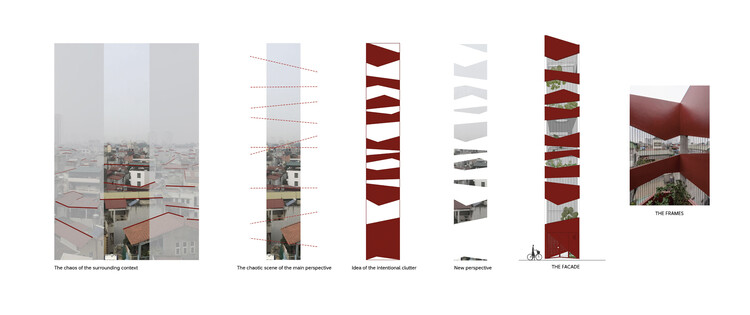
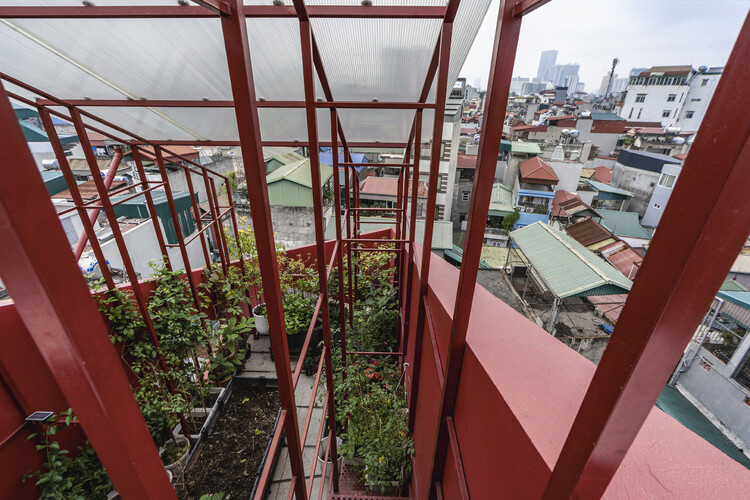
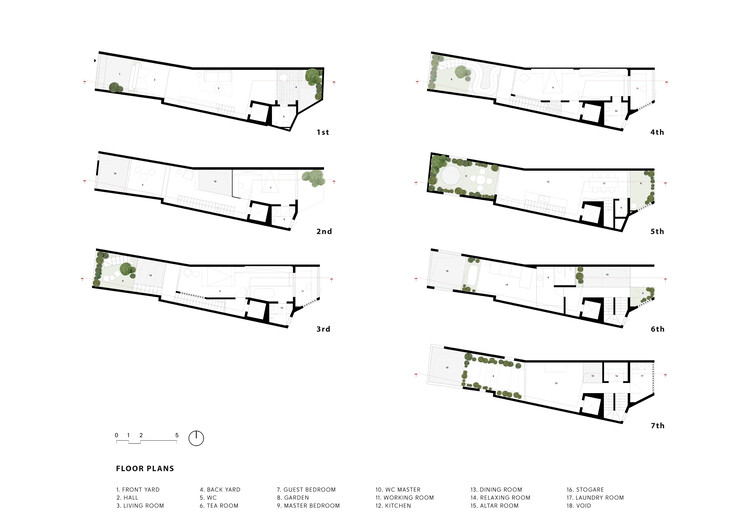
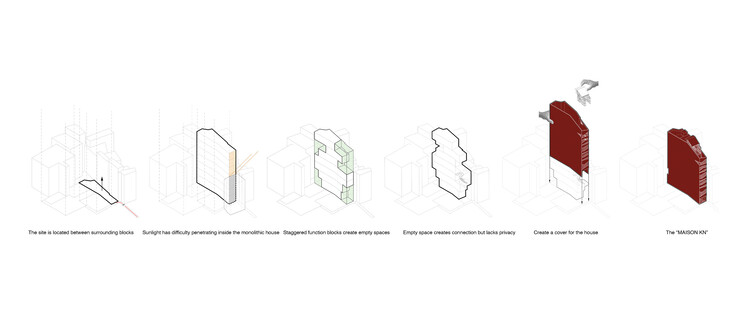
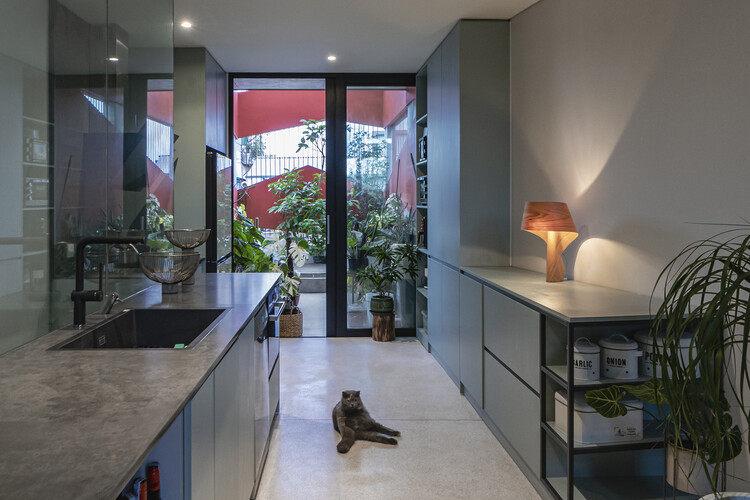
The design brief mandated the creation of a self-contained, interior-focused residence that provided openness and comfort. Here, every aspect of living, working and leisure was carefully integrated. Additionally, the outdoor garden space was maximized to function as an ecological sanctuary capable of cultivating diverse greenery within its unique microclimate – sustainable living – a luxurious aspiration given the site’s urban context. Maison KN has a very clear identity from outside the facade. The idea was created by identifying the surrounding area when viewed from above. Where chaos is created by the non-linear contours of the surrounding roof, this randomness is “reflected” by random solid and empty patches on the building’s facade. From the inside, this facade creates different visual frames according to the heights of each floor.
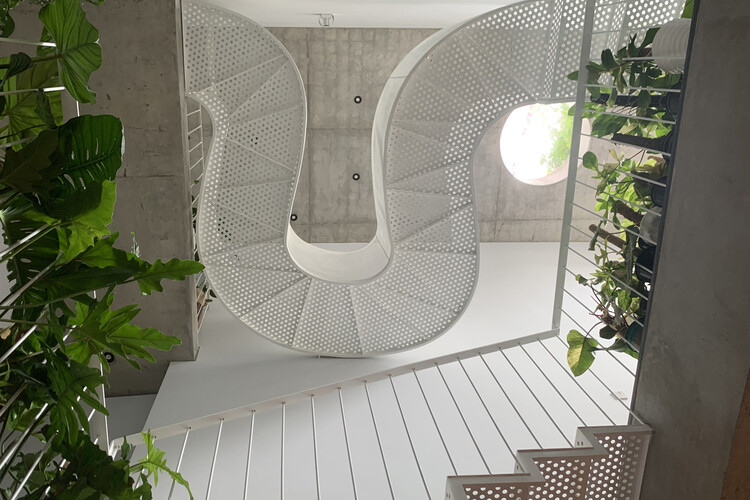
The particular highlight of the interior space is located in the 3rd floor garden, which is the space that connects the interior to the exterior and is also a buffer space that provides ventilation but still privacy from the houses directly opposite. In this sense, the concept aims to create a floating passage within the space, connecting the two levels of the house. Using a steel frame, but shaping it with soft, fluid lines, resembling a thin strip of silk. Perforated steel and mesh were chosen to create transparency, making everything feel much lighter.
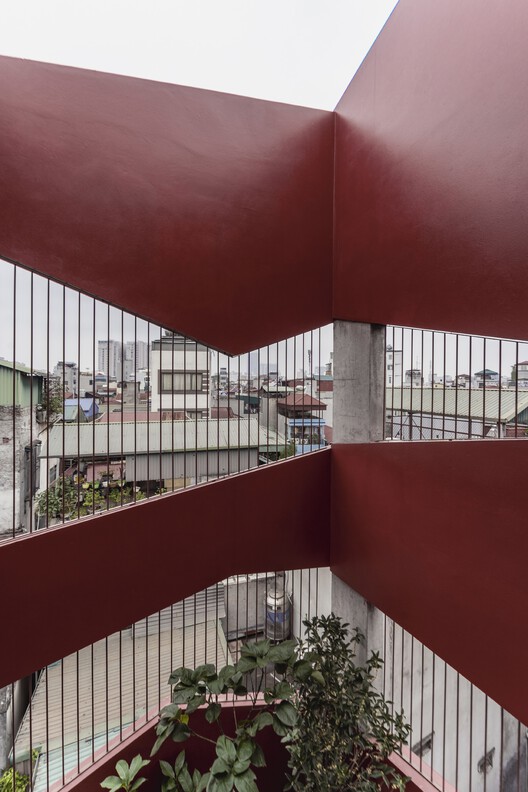
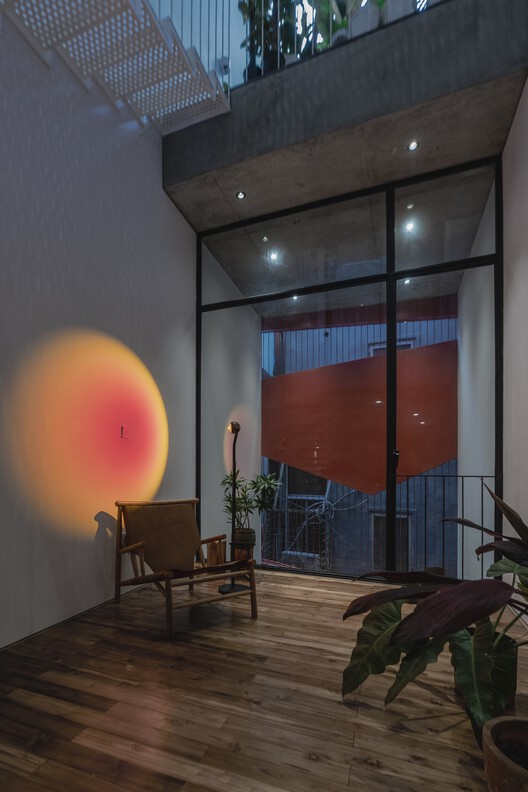
This design brings a unique experience to the interior space, where the circulation path simultaneously brings as much natural light into the garden as possible and penetrates deep below, where natural light is difficult to access from the narrow front facade of the house. The house is also a green and sustainable housing unit when the use of natural light and ventilation is optimized, rainwater is collected and used for the natural development of the gardens. Flora grows and develops based on a circulating biosystem. The plants are watered with a rainwater harvesting system and the compost is used entirely from the existing dead vegetation, creating a mini-ecosystem of circulating plants in the house.
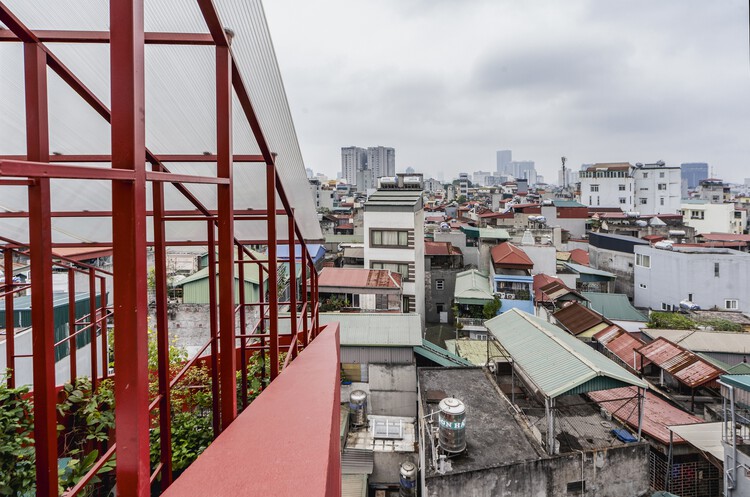
#Maison #NghiaArchitect #ArchDaily
Image Source : www.archdaily.com
